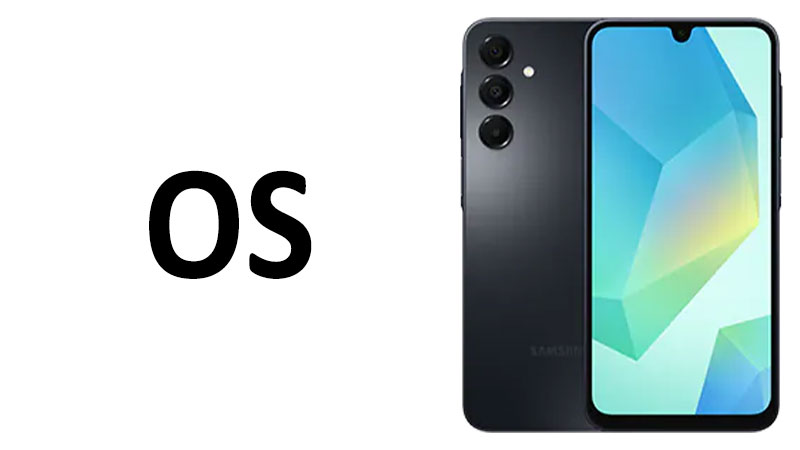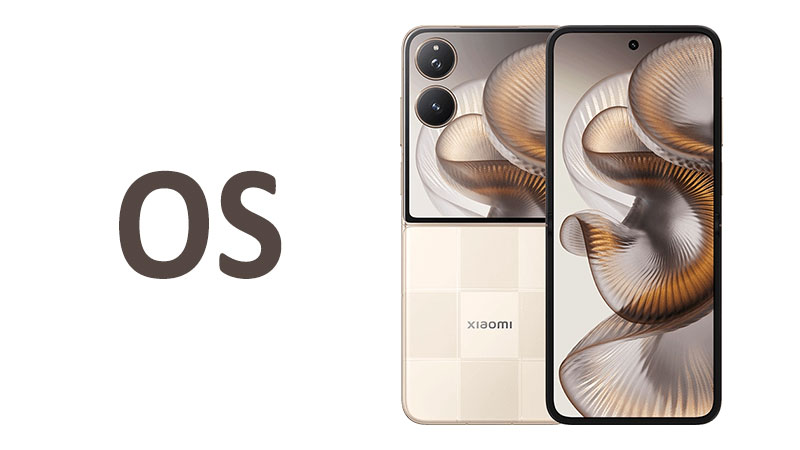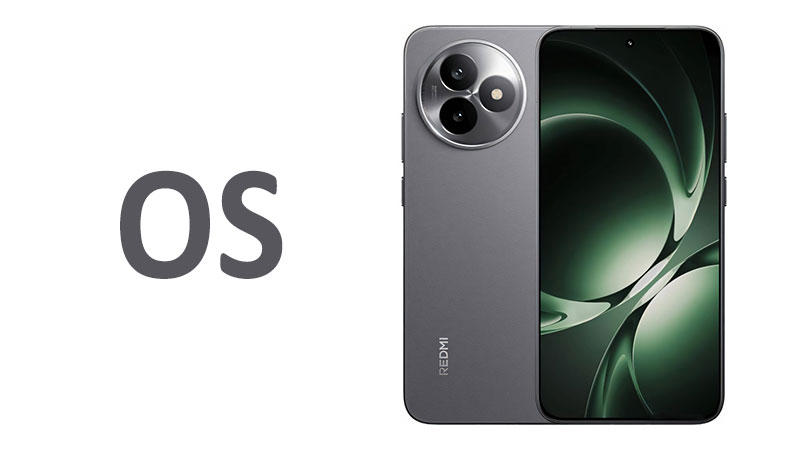The Samsung Galaxy A16 OS begins an exciting new chapter for budget smartphones. It promises a significant leap forward in software commitment and user experience. Samsung ships the device with Android 14 pre-installed. It also features the highly optimized One UI 7 interface right out of the box. The most transformative feature of the Galaxy A16 is its software support policy. This device receives up to six major Android upgrades. This commitment redefines smartphone longevity in the competitive mid-range market. This extensive support ensures the Galaxy A16 remains relevant and secure for many years. We will explore the deep integration of Android 14 and One UI 7. This comprehensive analysis covers performance, design, and the unprecedented upgrade cycle.
The Galaxy A16 is not just another yearly hardware refresh. It is a strategic move by Samsung to establish software endurance as a core competitive advantage. For consumers, this level of long-term support translates directly into greater value. They can feel confident in their purchase for half a decade or more. Understanding the nuances of the operating system is critical. It helps users maximize their experience and appreciate the extensive software package Samsung delivers.
The Unprecedented 6-Year Software Commitment
Samsung introduced a game-changing update policy with the Galaxy A16. It guarantees an unparalleled lifespan for a budget-friendly device. Historically, the Galaxy A-series received two to three major OS updates. The A16 breaks this mold dramatically. It is set to receive up to six major generations of Android. This policy puts the A16 in a league previously reserved only for Samsung’s premium flagship S-series phones.
The promise of six major Android upgrades is a powerful statement. This means the Galaxy A16 will receive new features, performance tweaks, and security enhancements well into the future. A device launching with Android 14 will likely see updates up to Android 20. This exceptional commitment is backed by an equal period of security patches. Users enjoy consistent protection against emerging digital threats for six full years. This level of support significantly boosts consumer confidence in the affordability segment.
Redefining the Mid-Range Lifespan
The durability of a smartphone is now measured in its software lifespan, not just its hardware. The Galaxy A16’s software commitment tackles the problem of planned obsolescence head-on. Most rival budget phones quickly become outdated due to limited update cycles. They often stop receiving major upgrades after two or three years. This forces users to upgrade sooner than they might prefer.
The A16’s six-year guarantee eliminates this pressure. It allows users to keep their devices longer without sacrificing crucial security or modern features. This extended life cycle also promotes sustainability. Users create less electronic waste by keeping their phones for a longer period. This commitment is a major talking point for environmentally conscious consumers. It provides a unique selling proposition for the budget Samsung Galaxy A-series.
Comparison: A16 vs. A15 and Competitors
The previous model, the Samsung Galaxy A15, generally offered a respectable update policy. It typically received four major Android OS upgrades and five years of security patches. The jump from four to six major upgrades with the A16 represents a 50% increase in generational support. This dramatic change positions the A16 as a superior value proposition.
When comparing the A16 to primary competitors in the budget sector, the difference is even starker. Many competing brands in this price range still offer only two years of OS updates. Sometimes they offer only three years. The extended support of the Galaxy A16 fundamentally alters the investment calculation. Buyers now invest in a device that delivers modern features and security for twice as long as many competitors. This makes the A16 a leader in software longevity among affordable smartphones. The upgrade policy is arguably the most compelling reason to choose this specific model.
Deep Dive into Android 14 on the Galaxy A16
The base operating system powering the A16 is Android 14. This version of Android brings numerous under-the-hood optimizations and user-facing improvements. Android 14 is specifically designed to be highly efficient on diverse hardware. This makes it an ideal foundation for a mid-range phone like the Galaxy A16. It ensures core system performance remains smooth and responsive.
Google’s focus on core system health in Android 14 is immediately noticeable. These optimizations work seamlessly with Samsung’s custom One UI interface. The result is a fluid experience that belies the phone’s affordable pricing. This foundation ensures the phone is ready for the future. It sets the stage for the five subsequent major Android upgrades it will receive.
Performance and Efficiency Boost
Android 14 introduces significant advancements in memory and CPU management. This is crucial for devices with less premium processing power, such as the Galaxy A16. The operating system uses advanced CPU scheduling techniques. It prioritizes foreground tasks and ensures immediate responsiveness for the active app. This reduction in system lag contributes greatly to a feeling of speed.
Battery life sees a boost thanks to more aggressive background process limitations. Android 14 further refines the Doze mode introduced in previous versions. It restricts unnecessary background activity even more effectively. This results in an increased average screen-on time for the Galaxy A16’s already large battery. Users can expect reliable all-day performance. Another key feature is the return of the “screen time since last full charge” indicator. This allows users to better track and understand their device’s battery consumption.
Personalization and Privacy Enhancements
Customization is a major focus in Android 14. This translates into more personalized user experiences on the A16. Users can now enjoy vastly expanded lock screen customization options. They can change the clock style, font, and layout of various widgets. This makes the phone feel truly unique and tailored to individual taste. The Material You dynamic theming is also more refined. It applies cohesive color palettes across more third-party application icons.
Privacy is also significantly enhanced. Android 14 offers more granular control over app permissions. When an app requests access to photos, users can choose to share only specific images rather than granting blanket access to the entire gallery. This increased selectivity gives users better control over their personal data. Furthermore, Android 14 includes improved protection against installing older, potentially harmful apps built for obsolete APIs. This small but important security measure helps maintain the integrity of the Galaxy A16 OS.
One UI 7: A Revolution in User Experience
One UI 7 is Samsung’s proprietary skin layered atop Android 14. This version represents a substantial evolution in Samsung’s mobile interface design. One UI 7 focuses heavily on accessibility, intuitive control, and seamless integration of Galaxy AI features. It works to bridge the gap between flagship and mid-range user experiences. This ensures that Galaxy A16 users feel part of the premium Samsung ecosystem.
The interface is optimized to perform efficiently even on mid-range chipsets. This ensures that the aesthetic improvements do not hinder the daily usability. One UI 7 introduces numerous subtle animations and visual cues. These changes make the experience feel more polished and modern. The overall design language is sophisticated and user-friendly.
Design Overhaul and Visual Refinements
One UI 7 brings a refined, cleaner aesthetic to the Galaxy A16. The visual design leans into softer curves and circular motifs across menus, buttons, and system notifications. This gives the interface a fresh, contemporary look. Samsung has also redesigned many of the native app icons. They feature enhanced clarity and a slightly more colorful palette. This contributes to a visually cohesive experience on the Super AMOLED display.
Accessibility is key to the design changes. The new system allows for a larger font scaling option, up to 200%. This is crucial for users with visual impairments. The interface also improves its handling of landscape orientation. This creates a more consistent look when the device is used horizontally. These small, thoughtful design changes greatly enhance daily interaction with the Galaxy A16.
Next-Generation Galaxy AI Features
The most notable inclusion in One UI 7, even on the mid-range A16, is the expansion of Galaxy AI capabilities. While some hardware-intensive AI features may be reserved for flagships, the A16 receives essential, productivity-boosting tools. The AI Select feature, accessible via the Edge panel, allows users to draw around screen content. This prompts relevant AI actions like text summarization or image editing.
The Writing Assist tools are deeply integrated into system apps like Messages and Notes. This feature helps users rewrite text, change the tone, or instantly summarize long passages. Another important feature is the Call Transcript function. When calls are recorded using the Samsung Phone app, the system automatically provides a transcript and summary. These AI-powered functions make the Galaxy A16 a smarter and more intuitive tool for daily communication and productivity.
The New Notification and Quick Settings Paradigm
One UI 7 introduces a major restructuring of the notification and quick settings access. This change is designed to improve usability and reduce clutter. By default, the Quick Settings panel and the Notification shade are now separated. Swiping down from the top right corner opens the Quick Settings grid. Swiping down from the top left or center opens the full Notification panel.
This paradigm shift ensures quicker access to essential toggles and notifications. It allows users to control device settings immediately without viewing pending alerts. One UI 7 also introduces the “Now Bar” and “Now Brief.” The Now Bar is a dynamic widget on the lock screen. It provides live updates for ongoing activities like timers, music playback, or exercise tracking. The Now Brief feature delivers personalized, consolidated summaries of important information, such as weather updates or meeting reminders, right on the lock screen. These features ensure essential information is instantly accessible without fully unlocking the device.
Analyzing the Pros and Cons of the Software Ecosystem
The Samsung Galaxy A16 software package is highly ambitious for its price segment. Analyzing the advantages and potential drawbacks helps buyers set accurate expectations for their long-term usage. The strengths overwhelmingly center on the support duration and feature richness. However, the sheer size of the software ecosystem presents some minor trade-offs.
Key Advantages for the Consumer
The primary benefit is the longevity and security offered by the six-year update policy. This is unmatched in the budget market. It means users can keep their phone functional and safe for significantly longer. Secondly, the feature-rich user experience of One UI 7 provides a level of sophistication usually found only on expensive devices. The integration of personalization options, enhanced privacy controls from Android 14, and foundational Galaxy AI features elevates the daily usage experience.
A third major pro is the optimized performance. Android 14’s under-the-hood efficiencies are perfectly suited for mid-range hardware. This ensures that the A16 performs smoothly and maintains good battery life. The continuous stream of major upgrades means the phone will receive new features for years. This prevents the stagnation often associated with budget phones.
Potential Drawbacks and Considerations
The main potential drawback is related to the scale of the software itself. Samsung’s One UI is a comprehensive, heavily customized Android skin. It has a larger storage footprint compared to stock Android interfaces. This leaves slightly less usable storage on the device out of the box. Users of the 128GB version should monitor their storage carefully, although the A16 does support microSDXC expansion.
Another consideration is the upgrade speed. While the A16 receives six major upgrades, mid-range devices typically receive these updates several months after the flagship S-series. Buyers should expect a slight delay in receiving the newest Android version. Finally, the extensive features, particularly the AI functions, require a certain amount of system resources. Although optimized, the A16’s hardware may not execute every AI feature as instantaneously as a flagship phone. However, this is a minor trade-off for the inclusion of these advanced features.
Essential Buyer’s Guide: What Readers Must Know
The software package is arguably the single most compelling reason to choose the Samsung Galaxy A16. Understanding a few key points about the OS and its lifecycle is vital for potential buyers and current users. This knowledge helps in planning phone usage and anticipating future support.
Future-Proofing Your Investment
The six major Android upgrades promise is the definition of future-proofing. Buyers should recognize that this benefit is not purely cosmetic. Each major OS upgrade brings crucial security architecture improvements and new APIs. These ensure compatibility with future apps and services. This support guarantees that banking apps, productivity suites, and streaming services will function reliably throughout the phone’s long life. The longevity makes the initial purchase price, already affordable, an even better long-term investment.
Buyers must remember to allocate storage for future operating system updates. While Samsung streamlines the process, six major upgrades require space. This is a small price to pay for half a decade of continued software refinement.
Impact on Storage and Performance Over Time
The Galaxy A16 ships with a relatively large operating system. The One UI 7 implementation, combined with the Android 14 base, uses a significant portion of the internal storage. Users should consider purchasing the 256GB storage variant if they plan to keep the phone for the full six years. Large operating system files and increasing app sizes make extra storage space valuable over time.
While performance is highly optimized at launch, users must manage their expectations over the long term. A six-year-old processor will inevitably feel slower than a brand-new one. However, Samsung’s commitment ensures that the software itself will remain optimized for the original hardware. They continue to refine code and remove system inefficiencies with each patch. This focus on optimization helps minimize the effects of inevitable hardware aging. Users should actively utilize the Device Care features built into One UI. These tools manage memory and background processes effectively.
Final Verdict and Informed Decision
The Samsung Galaxy A16 OS, running on Android 14 with One UI 7, is a revolutionary product in the mid-range segment. Its defining characteristic is the industry-leading promise of up to six major Android upgrades and years of security patches. This commitment transforms the perception of a budget smartphone. It turns it into a genuine long-term investment.
The combination of Android 14’s core efficiencies and One UI 7’s advanced Galaxy AI features and visual polish creates a sophisticated user experience. This experience far exceeds what is typically expected at this price point. Buyers gain a device that is secure, highly customizable, and set to receive functional updates for over half a decade. Choosing the Galaxy A16 is a decision for unmatched software longevity and exceptional value. For consumers prioritizing long-term support and a modern, feature-packed interface, the A16 offers a decisive advantage over all competitors.
Frequently Asked Questions (FAQ)
What version of Android does the Samsung Galaxy A16 launch with?
The Samsung Galaxy A16 launches with the Android 14 operating system pre-installed. It has Samsung’s custom One UI 7 layered on top of the system.
How many major OS updates will the Galaxy A16 receive?
The Galaxy A16 is guaranteed to receive up to six major Android operating system upgrades. This ensures its software remains modern for many years to come.
Does the Galaxy A16 get the new Galaxy AI features found in One UI 7?
Yes, the Galaxy A16 receives essential productivity-focused Galaxy AI features included in One UI 7. These include the Writing Assist and Call Transcript tools.
What is the ‘Now Bar’ feature in One UI 7 and how does it help?
The Now Bar is a dynamic widget on the lock screen of the Galaxy A16. It provides live updates and controls for ongoing activities like music, timers, and health tracking. It offers instant interaction without unlocking the device.
How long will the Samsung Galaxy A16 receive security patches?
The Samsung Galaxy A16 is part of the six-year software commitment. It will receive critical security patches for the full duration of its promised software lifecycle.



